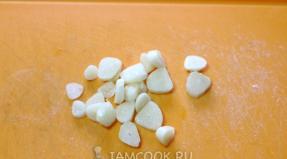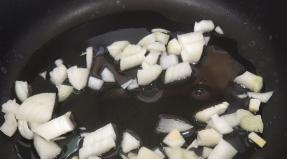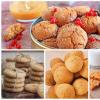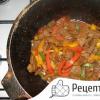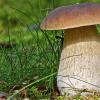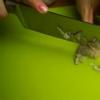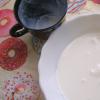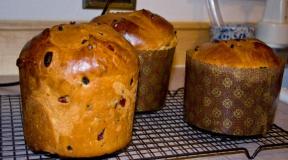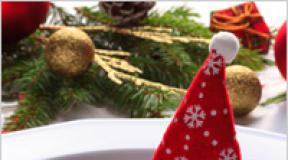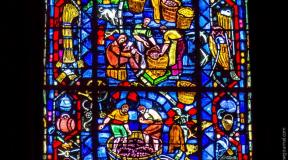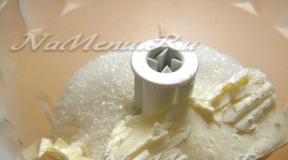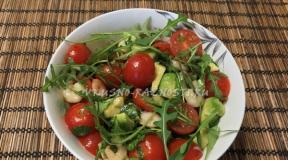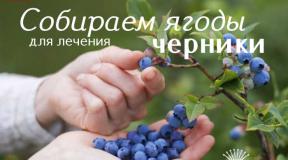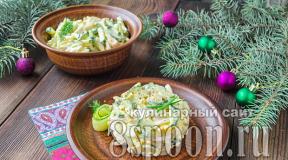How to determine what honey. How to determine the quality of honey at home: ways
Honey is a healing product that honey bees give us. Surprisingly, its composition has not yet been fully studied. There are about a hundred types of this delicacy, but in our area three types are traditional: buckwheat, linden and acacia. All of them differ in their color and taste. Honey is famous for its anti-inflammatory, bactericidal, antibacterial properties. The natural product has an amazing and unique taste and color.
In order to fully enjoy all the taste and healing qualities of golden honey, you need to be able to distinguish real honey from a fake. Not only sugar is added to the counterfeit, but also starch, flour and even chalk. If honey crystallizes, this does not mean that you bought a fake. On the contrary, a natural product will be candied in 1-2 months. This is due to the fact that natural honey contains a lot of pollen. If it does not crystallize, most likely it was subjected to heat treatment, as a result of which all the useful properties of the product were lost.
Crystallization lends itself to all varieties without exception, beekeepers in this case use the concept of "set honey". The properties of the product after sugaring are preserved. It is difficult to fake it, so do not buy a liquid product in winter, because you can buy honey that has been melted in a steam bath. And in summer, candied honey may not be the first freshness.
It is best to buy honey directly from beekeepers. But if you do not have such an opportunity, and you buy it on the market, make sure that direct sunlight does not fall on the product, which destroys all vitamins and enzymes. Be sure to ask where the honey was stored. It cannot be stored in aluminum, copper dishes, since the acids that make up honey react with the metal, which then accumulates in the body and can cause various diseases. It is ideal if you buy honey in glass, earthenware, wooden or plastic containers.
If you doubt the quality of the purchased honey, do some simple experiments at home: 
- Add a couple of drops of iodine to a cup of honey. If the product turned blue, starch was added to it so that it would not sugar.
- Add a few drops of vinegar. If the honey sizzles, chalk is added to it to increase the viscosity.
- Dip a spoon into the honey and slowly lift it up. Real mature honey will stretch like a thread and, descending, will create a hill, and the thread, breaking off, will stretch up. If the product is not yet ripe, it will instantly spread and form a funnel.
- Rub a drop of honey between your fingers. If it is natural, it will instantly be absorbed into the skin.
- Dip a slice of fresh bread into the honey. If the bread gets wet, you have a fake or spoiled product.
- Put some honey on blotting paper. If after 3-5 minutes you see a watery spot on the back of the paper, you bought a fake.
- Put some honey on paper and set it on fire. If the honey began to melt, the bees were fed with sugar syrup, and if it changed its color to brown, sugar was added to it. Real honey will not burn or change color.
It is best to buy honey in season, it usually begins to be harvested in mid-August. Try to purchase this healing product from a trusted beekeeper you know with a year's supply in advance.
Natural honey is valued for its medicinal and nutritional properties. The benefits for humans are due to the fact that the list of minerals in its composition is similar to the minerals in human blood. This product has bactericidal properties that depend on the amount of enzymes it contains. So, in taiga varieties, the diastase number can reach 40. That is why even Koch's stick cannot withstand more than 3 hours in honey. Products such as butter, meat can be stored in it for several months without spoiling. If the product is natural, it cannot cause infection or poisoning. But how to determine whether honey is natural or fake if it is one of the three most falsified products?
According to the statistics of Rospotrebnadzor, every fifth jar on the beekeeping market is a fake. Only in order to get a tablespoon of the product (about 30 gr.) 200 bees have to work all day.
To increase the number, beekeepers go to different tricks:
- add foreign products to increase the mass and density (starch, flour, chalk, sugar syrup);
- feed the bees with sugar;
- heated, giving a more attractive look to customers;
- pass off an artificial product as a natural one.
The sale of unripe honey is common. Beekeepers do not wait for its maturation and start pumping out even at the height of the honey flow. As a rule, the reason for this is the lack of cells. Such honey is not enriched with enzymes and quickly turns sour. By consistency, it is liquid, since in its composition water can sometimes exceed twice the norm.
Artificial honey is produced so carefully that it can only be distinguished from natural honey in laboratory conditions. But people who buy in the markets, apiaries, shops have neither a microscope to determine the composition, nor a device that measures humidity. Therefore, the question arises, how to determine the quality of honey when buying available means and methods?
It is better if before buying there will be an opportunity to get acquainted with information about the varieties, characteristics and properties of a valuable product.
Classification
The classification is based on a regional basis, method of extraction, color. So, if the bees collected nectar from one plant (buckwheat, linden, acacia, linden, maple), then the result is a monofloral product. If the apiary was located in the meadows, among the flowering steppe, in the garden, then it will be mixed (polyfloral).
Bees can produce honey not only from the nectar of flowers, but also from the sweet juice secreted by plants and from the secretions of insects living on plants (pad). Honey obtained from honeydew is called honeydew. It does not have a pronounced aroma and taste, often dark brown in color, sometimes with a green tint, and is considered second-rate.
According to the method of extraction, the product can be:
- gravity - independently flowing from the honeycombs;
- centrifugal - obtained by pumping out of honeycombs in a honey extractor;
- cellular - sold in sealed combs.
What to look for when choosing
The first minimum you need to know when going shopping is what color the variety you plan to purchase has and how it happens so as not to get confused in the information on the label.
Each variety has its own color, which varies from all shades of yellow to brown:
- linden honey has an amber color,
- buckwheat suggests all shades of brown,
- floral - light yellow,
- clover almost colorless,
- sunflower - golden yellow.
High-quality honey is transparent, regardless of color. If there are additives, then it will be cloudy and sediment is possible in it. There may be blotches, but it is absolutely harmless. These are particles that are not filtered out during pumping.
According to taste data, only a honey sommelier can determine a quality product.
The specialist advises to take a small amount and, as it were, “smear” it in the mouth over the tongue. At the same time, it should feel tickling. Then take a breath and on the exhale there should be an aftertaste.
But such defects as acid caused by fermentation, caramel taste as a result of heating, strong bitterness can be identified by an inexperienced buyer. Honey has a pronounced aroma. If it was diluted with syrup, the smell will be barely distinguishable.
If you rub a little honey between your fingers, then it is absorbed into the skin and its consistency is uniform. If grains are felt and lie down unevenly, this indicates a low quality of the product.
In shops and fairs, on containers sold, labels with information on the amount of sucrose are required. According to GOST, it should be contained in the range from 1 to 6 units. If the bees were fed with sugar syrup, then the number of units can reach up to 30.
Also, each beekeeper must have a veterinary passport of the apiary. You should not be shy to ask him, because this is the only way to find out that the nectar was collected by non-sick bees.
How to determine the quality in the fall
Harvest in Russia ends at the end of August. After that, beekeepers begin to drive honey, and it goes on sale. Fresh product is thick in texture but not creamy. If so, then it's not honey of its own shrinkage - it's whipped . Often low-quality varieties are whipped, thereby turning them into expensive, and sometimes elite ones. When whipping, useful components are lost, and the output is only a sweet cream. In addition, if in a liter jar of fresh honey there is almost 1.5 kg, then whipped honey is half as much. It only benefits the seller.
Alcoholic taste, sour smell, hissing when stirred and bubbles on the surface, indicate that the honey has fermented. As a rule, this happens with unripe honey, when the beekeeper hastened to collect it.
A natural product contains up to 21% water, so it is viscous in consistency and 1.5 times denser than water. One liter of a quality product should weigh 1440 grams. Weighing is one of the methods for determining quality.
It should be taken into account that linden honey is slightly lighter, flower varieties are heavier. Autumn varieties are not liquid, with the exception of those taken from acacia and mountain chestnut.
Winter nuances
In winter, honey cannot be liquid. If a liquid product is sold in winter, it means that it has been exposed to heat. You should know that at temperatures above 40, only minerals remain, and enzymes are destroyed. When heated above 60, carcinogens are formed. The use of such honey can lead to diseases of the central nervous system and malignant neoplasms.
In winter, the quality is determined by crystallization. The mass must be homogeneous without delaminations. If the honey thickens at the bottom of the jar, but remains liquid on top, then it is immature. But there are subtleties here too. So, spring varieties crystallize faster. The more glucose in the composition, the faster the crystallization. Its level, in turn, depends on the botanical origin. For example, sunflower honey contains a large amount of glucose and can often crystallize in honeycombs. Therefore, a bee gift can thicken both in 2 weeks and in a year. If the grains in the crystallized product are large, then it contains more glucose, if small, then fructose.
Home quality testing
There are many ways to determine honey for naturalness at home.
The simplest and most affordable methods to determine honey for naturalness:
- The presence of additional substances, such as chalk, molasses, starch, can be detected by dissolving honey in water in a ratio of one to two. If the honey is fake, the water will become cloudy and sediment will gradually begin to form. If vinegar is dropped into the solution and gas bubbles are released, it means that chalk has been added.
- Starch or flour in the composition is determined by a solution of iodine. To do this, it is enough to drop a drop of iodine solution into honey, if it turns blue, then there are impurities.
- When adding honey to warm tea, the drink may darken, but it should not form a precipitate.
- Ripened honey, if poured from a spoon, winds like a ribbon without interruption. A trickle of unripe honey will surely break. A quality product will not spill out of a spoon if it is turned over, but if it is sugary, it will definitely drain.
- If mature honey is poured in a stream in one place, then a hill should form and the higher it is, the less humidity. A product with a high water content will spread without forming a heap.
- Maturity can be determined by dropping a drop on a paper napkin. The drop should retain its shape and not be absorbed into the paper.
- A piece of bread dipped in a quality product hardens. If the bread spreads, then it is fake.
Product storage
Often, fans of a natural natural ingredient have a question, how to store honey at home? There are some nuances, under which a useful product will not lose its useful properties for many years.
The storage temperature of honey should be constant. He is afraid of light, so there is a storage rule with conditions: warm and dark. With the right content, honey retains its properties for decades. Experts believe that for each year of storage, two diastasia units are lost.
Plastic and metal utensils are unsuitable for storage, it is better to use glass, ceramics, wood or aluminum containers.
Crystallization is a natural phenomenon that does not affect the quality of the product. But if there is a desire to use liquid honey, then it cannot be heated. In order for it to melt with the preservation of all useful properties, it is enough to put the jar in warm water, which must be changed. If stored in conditions of high humidity, then even a quality product can turn sour, as it easily absorbs moisture.
To buy a really high-quality bee product, and not a fake, it is important to know how to check honey for naturalness. With equal success, this can be done both in the laboratory and at home. Cunning folk methods include checking with iodine, chemical pencil, water, vinegar, milk and other improvised means.
What is fake
Natural honey is usually mixed with sugar syrup, beet or starch syrup, saccharin, chalk, flour and other impurities.
Attention! Liquid honey sold in winter testifies:
- about the falsification of the product;
- about the intentional removal from the crystallized state by heating, which deprives it of all healing properties.
You should also be wary of candied honey in the summer, as this means that it is last year's.
How to check honey for naturalness
The quality and naturalness of a bee product can be determined in two ways: "by eye" and with the help of special tools. Let's consider the first method in more detail.
Checking honey "by eye"
Taste
Checking honey at home begins with a taste test of the product. The taste of a natural amber dessert is pleasant, tart, giving off a floral or herbal sound. It should melt on the tongue, covering with a tingling, slightly burning aftertaste. It leaves no residue, solid particles or crystals behind. A light shade of caramel gives out warm honey, and sugary sweetness is an admixture of sugar.By color
Knowing the varieties of honey will help you easily identify a fake. As you know, each type of bee product has its own characteristic shade. For example, the linden variety is distinguished by an amber color, the flower variety is golden yellow, the mustard variety is creamy yellow, and the chestnut variety is dark brown. But all of them, regardless of color, are transparent and pure. Fake honey is a little cloudy and has a sediment.
By smell
The quality of honey is easy to determine by aroma. A natural product smells of floral or herbal notes, while a dessert with an admixture of sugar, starch or flour has no smell - neither pleasant nor pungent.
By density and viscosity
Dip a thin wooden stick into the honey and then slowly pull it out. Real honey will follow her with a long thread. When interrupted, the thread forms a turret on its surface, which is then slowly absorbed by the product. If honey becomes similar to glue and drips from the stick with small splashes, then you have a surrogate.
By consistency
When making demands on the quality of honey, pay attention to its consistency. The natural product of beekeeping is characterized by a thin, viscous, delicate structure. It rubs well between the fingers, melts and is absorbed into the skin, while the fake leaves lumps on the hands, characterized by a rough texture.
We attract improvised means
Attention! Foreign substances are added to honey for three reasons:
- to hide signs of damaged goods;
- to give it a natural and appetizing look;
- to add weight.
However, it is quite easy to bring unscrupulous sellers to clean water. Honey can be checked with iodine, chemical pencil, vinegar, alcohol, paper, hydrochloric acid and other items.
Determine the admixture of molasses
Mix one part of honey with 2 parts of distilled water and add a few drops of ammonia. Shake the mixture. If the solution turns brown and precipitates of the same color, then the product is mixed with starch syrup.
You can determine its presence in another way: dissolve honey in two parts of water and add 2-3 drops of hydrochloric acid and 20-30 g of wine alcohol to the mixture. Turbidity of the solution indicates the presence of molasses.
Detect the presence of flour or starch
Consider how to test honey with iodine for the presence of flour or starch impurities. Dilute the product with distilled water and drop a few drops of ordinary iodine into the solution. The blueness of the composition is a clear sign that flour or starch is mixed into the amber dessert.
Attention! The darker the color, the more starch is contained in the bee product.
Checking for chalk
Dissolve honey in water and add a few drops of acetic acid (essence) to the mixture. If the solution boils, emitting a characteristic hiss and releasing carbon dioxide bubbles, your dessert is “stuffed” with chalk.
"Unmasking" Sugar
In connection with the increasing cases of falsification of the bee product, many people are interested in the question: how to check honey for sugar? You can do this in several ways:
- The sugar product betrays with its head its suspiciously white color, taste reminiscent of sweet water, lack of astringency, and a slight smell.
- Add it to hot milk, and if it curdles, you have a fake mixed with burnt sugar.
- In a cup of weak tea, dissolve 1 teaspoon of honey, and then inspect the liquid. Sediment at the bottom of the cup is a sign that the quality of honey leaves much to be desired.
- Dip the bread crumb into the dessert and leave it in it for 10 minutes. Then take it out and inspect. Softened bread indicates the presence of sugar syrup, hardened bread indicates a quality product.
- On a piece of paper (newsprint or toilet paper), which absorbs moisture well, put a little amber dessert. If it “smeares” on paper, leaving wet marks, or seeps through it, you bought a surrogate with an admixture of sugar syrup or water.
How to test honey with a chemical pencil
An indelible pencil is an effective tool that you should definitely take with you to the beekeeping market or fair. Its peculiarity is that it changes color when it comes into contact with moisture. Before buying honey, immerse the instrument in it. If it changes color, it means that they are trying to sell you a product diluted with water under the brand name of natural. Checking honey with a chemical pencil is also carried out in order to identify impurities in sugar syrup.
The easiest way to check quality
- Dissolve 1 teaspoon of honey in a glass of warm water and leave the composition for 1 hour. The sediment formed at the bottom of the glass or flakes that have floated to the surface indicate the unnaturalness of the bee product.
- Drop honey on paper and set it on fire. If the product is of high quality, only the paper will burn, and the honey will remain intact - it will not char, burn or darken. The counterfeit will turn brown and melt slightly, leaving the characteristic smell of burnt sugar in the air.
On honey, sometimes there are vivid evidence of its naturalness - particles of pollen or wax, wings of bees. However, this fact cannot be a 100% guarantee. When buying, pay attention to the main indicators of honey quality - color, smell, viscosity and consistency. Subject it to all the listed methods of verification and enjoy the great taste of a natural product.
All materials on the site are presented for informational purposes only. Before using any means, consultation with a doctor is MANDATORY!
Methods for determining the quality of honey
Many people ask: "Where to make an examination of honey in St. Petersburg?"
I answer: "In the State Budgetary Institution of the St. Petersburg City Veterinary Laboratory at the address: Rizhskaya St., 6, lit. A
Test center phone: 444-57-11
The people have their own methods of how to determine the quality of honey, for example, using a chemical pencil. The bottom line is this: a layer of honey is applied to paper, a finger or a spoon and a chemical pencil is drawn over it, or a pencil is dipped into the honey itself. It is assumed that if the honey is falsified, i.e. contains all sorts of impurities (sugar, sugar honey, as well as an increased amount of water), then a colored pencil mark will remain. However, the researcher V. G. Chudakov in 1972 tested 36 samples of honey of different quality, including 13 falsified ones, and believes that this folk method for determining the naturalness of honey and assessing its quality is absolutely wrong.
There is another folk method to determine the falsification of honey, it consists in a test on blotting paper. A small amount of honey is placed on blotting paper. If after a few minutes a watery spot appears on the back of the paper, this is considered a sign of falsification. Again, V. G. Chudakov conducted laboratory studies of this sample, which led to the conclusion that the sample actually allows you to determine almost 100% of counterfeit honey, but besides, some natural honeys also fall into the category of counterfeit.
If you buy honey, then look in the reference books for how it should look. The main thing is that it must have a certain aroma, honey taste, that is, a bouquet corresponding to a certain variety of natural honey must also match the color.
If the honey is too white, this should raise the suspicion that it is sugar? If the color is dark brown - is it not honeydew? If its aroma is blunted, the taste of caramel is felt - it means that it is melted honey.
Also pay attention to the consistency of honey - it should correspond to the density of the variety, at a temperature of 20 degrees Celsius it should be wound on a spoon, like a ribbon, with sweet threads that break at a certain moment.
Liquid honey should arouse suspicion. Most likely, this is unripe honey. It will not be stored, it will ferment, as it contains a lot of water. Such honey will not "wrap" on a spoon, but will simply drain from it. If you buy honey in the winter, it should not be liquid, and if it is, then it has most likely been warmed up or diluted.
When buying, check the honey for fermentation. When stirring, it should not be felt that it is not viscous, actively foaming, gas bubbles appear on the surface, that a specific sour smell comes from it, and there is also an alcohol or burnt taste.
Before buying a large amount of honey, buy 100-200 grams for a sample.
Beware of purchasing honey from apiaries located along highways with heavy traffic. In such honey, there may be an increased amount of lead compounds and other substances that fall on flowers with car exhaust. With nectar and pollen, lead gets into honey, and this is dangerous for the health of those who consume it.
Honey collected in areas with unfavorable ecology is very harmful.
How to identify impurities in honey?
To determine various impurities in honey, the following methods are recommended. Pour water into a transparent jar, add one teaspoon of honey, stir - the honey will dissolve, an impurity will settle at the bottom.
In order to detect an admixture of flour or starch in honey, you need to pour 3-5 ml of an aqueous solution of honey (1: 2) into a jar or glass and add 3-5 drops of Lugol's solution (or tincture of iodine). If honey contains flour or starch, the solution will turn blue.
An admixture of molasses (a mixture of cool water and starchy sugar) can be recognized by its appearance, stickiness, and lack of crystallization. You can also mix one part of honey with 2-3 parts of distilled water, add a quarter of the volume of 96% alcohol and shake. If there is starch syrup in honey, then the solution will take on a milky color. After settling this solution, a transparent semi-liquid sticky mass (dextrin) will settle. If the impurity is absent, the solution will remain transparent.
You can detect impurities of sugar (beet) molasses and ordinary sugar by adding a solution of silver nitrate (lapis) to a 5-10% solution of honey in water. If a white precipitate of silver chloride falls out, then this indicates the presence of an impurity. If there is no sediment, then the honey is pure. There is another way: to 5 ml of a 20% solution of honey in distilled water, add 22.5 ml of methyl (wood) alcohol, with the formation of an abundant yellowish-white precipitate, it will become clear that honey contains sugar syrup.
To detect an admixture of inverted sugar (grated honey), there is a rather complicated method: grind 5 g of honey with a small amount of ether (in which the products of fructose breakdown are dissolved), then filter the ether solution into a bowl, evaporate to dryness and add 2-3 drops of freshly prepared 1 % solution of resorcinol in concentrated hydrochloric acid (sp. weight 1.125 g). If the impurity turns orange (to cherry red), then there is invert sugar.
An increased percentage of sucrose in honey, which can be established in the laboratory, indicates its poor quality: in natural flower honey, sucrose is not more than 5%, not more than 10% - in honeydew. The better the quality of natural honey, the less sucrose it contains. "Sugar" honey has its own organoleptic characteristics: the smell of old honeycombs, insipid inexpressive taste, liquid consistency (if it is fresh), during long-term storage it becomes thick, sticky, sticky.
"Sugar" honey (the bees were fed or fed with sugar), like all non-natural honey, is distinguished by the absence of vitamins, organic acids, protein and aromatic substances, mineral salts. In sugar honey, silicon is the main element, and other salts are practically absent, there are only traces of them. In natural honey - on the contrary.
If the honey does not crystallize, then it can be assumed that there is an admixture of potato molasses.
In order to detect an admixture of honeydew honey, pour 1 part of an aqueous solution of honey (1: 1) into a glass and add 2 parts of lime water, then heat the mixture to a boil. If brown flakes are formed that precipitate, then this indicates the presence of an admixture of honeydew honey.
A SET OF EXPRESS CHECKS OF HONEY FOR QUALITY AT PURCHASE
(Some points will repeat the above, but repetition is the mother of learning, because any reasonable adult is simply obliged not to allow himself to be fooled by any crooked crooks and in all cases be able to choose normal quality products)
Can I buy honey from my hands? Only if you are sure what you are buying. Selling honey in a store is also not a guarantee of its quality.
The only true guarantee of the quality of the purchased honey is a personal acquaintance with the beekeeper, confidence in his integrity and the knowledge that his apiary is located in a safe area. Therefore, it is best to buy honey from a familiar beekeeper right in his apiary.
The most common fake honey is sugar syrup. The same syrup is often diluted with unripe honey to give it the missing sweetness.
First, the honey must be mature. After all, bees work on nectar for about a week: they evaporate water, enrich it with enzymes, break down complex sugars into simple ones. During this time, honey is infused. The bees seal the finished product with wax caps, it is this honey that has all its useful properties and can be stored for a long time.
Very often, beekeepers pump out honey during the honey collection, without waiting for it to ripen, due to a lack of combs. The water content in such honey is sometimes twice the norm, it is not enriched with enzymes and sucrose, and quickly turns sour.
To determine the maturity of fresh unsweetened honey, its temperature is adjusted to 20 g. C, stirring with a spoon. Then the spoon is taken out and rotated. Ripe honey wraps around her. From time to time, honey can become sugary, this is normal, and does not affect either the taste, or the aroma, or the healing qualities of honey.
With the help of simple tests, you can determine if honey is adulterated:
- Flour and starch are determined by adding a drop of iodine to a small amount of honey diluted with water. If the solution turns blue, honey with flour or starch.
- If the solution sizzles when adding vinegar essence, there is chalk in honey.
- If in a 5-10% aqueous solution of honey, when a small amount of lapis solution is added, turbidity forms around the drops, and a white precipitate precipitates, sugar has been added.
How can you determine the quality of honey?
1) By color.
- Each type of honey has its own unique color. Flower honey - light yellow, linden - amber, ash - transparent, like water, buckwheat has different shades of brown. Pure honey without impurities, as a rule, is transparent, no matter what color it is.
- Honey, which has additives in its composition (sugar, starch, other impurities), is cloudy, and if you look closely, you can find sediment in it.
2) By flavor.
- Real honey has a fragrant aroma. This scent is incomparable. Honey with an admixture of sugar has no aroma, and its taste is close to the taste of sweetened water.
3) By viscosity.
- Take a sample of honey by dropping a thin stick into the container. If it is real honey, then it follows the stick with a long continuous thread, and when this thread breaks, it will completely fall, forming a turret on the surface of the honey, a pagoda, which then slowly disperses.
- Fake honey, on the other hand, will behave like glue: it will profusely drain and drip down from the stick, forming splashes.
4) By consistency.
- In real honey, it is thin, tender. Honey is easily rubbed between the fingers and absorbed into the skin, which cannot be said about a fake. Fake honey has a rough texture, and lumps remain on the fingers when rubbed.
- Before buying honey in the market in reserve, take the product you like from 2-3 regular sellers. To start with 100 grams. Do the recommended quality tests at home and only then buy it for future use from the same sellers.
5) Check if water and sugar are added to honey.
- To do this, drop honey on a piece of low-grade unglued paper (for example, ordinary newsprint or toilet paper), which absorbs moisture well. If it spreads over the paper, forming wet spots, or even seeps through it, it is fake honey.
6) Determine if there is starch in honey.
- To do this, put a little honey in a glass, pour boiling water over it, stir and cool. After that, drop a few drops of iodine there. If the composition turns blue, it means that starch has been added to the honey. This is fake honey.
7) Find out if there are other impurities in honey.
- To do this, take a red-hot stainless steel wire (you can heat it in the flame of a lighter) and lower it into honey. If a sticky foreign mass hangs on it, this is a fake for honey, but if the wire remains clean, honey is natural or, in other words, full-fledged.
8) What should I pay attention to when buying honey?
- Honey, incl. and when sold, it cannot be stored in metal containers, since the acids contained in its composition can give oxidation. This will lead to an increase in the content of heavy metals in it and to a decrease in useful substances. Such honey can cause discomfort in the stomach and even lead to poisoning.
Conscientious sellers store honey only in glass, earthenware, porcelain, ceramic and wooden utensils. If you see that honey is being sold from metal containers, immediately step aside.
9) How else can you distinguish a fake?
- In a cup of weak warm tea, add a little of what you bought under the guise of honey. If you are not deceived, the tea will darken, but no sediment will form at the bottom.
- Over time, honey becomes cloudy and thickens (candied) - this is a sure sign of good quality. And not, as many mistakenly believe, that honey has deteriorated.
- Sometimes honey during storage is divided into two layers: it thickens only from below, and remains liquid from above. This suggests that it is immature and therefore should be eaten as quickly as possible - unripe honey only lasts a few months.
- Careless beekeepers do not take out bees to collect nectar, but simply feed them sugar. Sugar honey is not natural. There is nothing useful in it. Such "sugar" honey is unnaturally white.
- There is no free water in real honey - in mature honey, water (about 20%) is completely bound in a true saturated solution. Honey with sugar syrup has a high humidity, this can be checked in the following way: dip a piece of bread into the honey, and remove it after 8-10 minutes. Bread will harden in high-quality honey. If, on the contrary, it softened or completely spread, then in front of you is nothing more than sugar syrup.
- But no one on the market will allow you to conduct such experiments, but they will give you a try. Often honey is dripped onto a small piece of paper for tasting. This is quite enough to conduct another experiment. When going to the market for honey, take a chemical pencil with you. Smear honey on a piece of paper with a pencil, you can smear it with your finger, and on the “honey” strip, try to write something with an indelible pencil. If after a few seconds an inscription or blue stains appear, you can confidently and loudly inform the seller (so that other buyers can hear) that starch or flour is present in the product. If there is no chemical pencil, a drop of iodine will do. The same blue hue of the proposed honey will unmistakably determine the starch and flour in the product.
10) What kind of honey is better - mountain or, let's say, plain?
- Do not fall for the bait when they try to convince you that mountain honey is better than the one that bees collect in our open spaces. Mountain honey has no special advantages over “plain” honey. The quality of honey and the concentration of useful substances in it depends only on the decency and knowledge of the beekeeper, as well as on the ecological situation in the honey collection area. Here, however, there is a difference between honey collected in a clean environment, and what the bees collected from the beds of an industrial enterprise. But here it all depends on the beekeeper. Conscience should not allow him to earn on "industrial" honey.
11) Honey sellers have several tricks designed for gullible buyers.
- First, plug your ears and don't listen to what they tell you. Check everything yourself. Of course, one honest seller can fall for a bunch of liars, but how do you know that the one who is standing in front of you is honest? Try honey not only from above, but also from the bottom of the jar. Feel free to put your spoon in the jar and don't listen to the salespeople who start yelling, "Don't ruin the product!"
- Unheated honey - both fresh transparent and candied - is an effective antiseptic, and a clean spoon in a jar cannot spoil it. Another thing is if there was not honey at the bottom, or this honey was previously heated, which led to the loss of its antiseptic and all other healing properties.
- Do not buy honey on the market without checking or rolled up. The fact that honey is better stored rolled up with a tin lid is a myth. A simple screw-on or tight polyethylene lid is sufficient.
- Crystallization (candied) is a natural process for honey, which does not affect its quality and composition of nutrients. Don't let crystallized honey fool you. Do not come the next day to the seller who promised you uncrystallized honey. They will bring the same, but warmed up. And in no case should you heat honey, because. this turns it into a simple sweet substance, devoid of so many useful properties!
12) Real honey has the following features:
- Quality honey does not roll off the spoon too quickly. Take a tablespoon of honey and turn the spoon over several times in a quick circular motion. Honey will wrap around it, almost not flowing into the jar.
- Immerse the spoon into the honey container. Pulling out a spoon, evaluate the nature of the flow of honey. A good one will form a ribbon, sit down in a hillock, and bubbles form on its surface.
- All types of honey have a sweet taste, but some of the varieties have a specific taste. For example, tobacco, chestnut and willow varieties have a bitter taste, while heather is astringent. Any deviations in the taste of honey indicate its poor quality. Other taste defects may be due to the presence of impurities. Excessive acidity may be associated with the onset of fermentation, the aroma of caramel is the result of heating, obvious bitterness is incorrect storage conditions for a low-quality product.
- The color of honey depends solely on the variety. It can be all shades of brown and yellow. Don't be alarmed by pale yellow, slightly hazy honey - this is normal for acacia honey that has stood for a while, because it is candied very slowly and for a long time - sometimes completely only by the end of winter (but be sure to try it and determine for yourself that it is acacia honey). Turbidity is not inherent in other types of non-candied honey, because. the process of their sugaring (turbidity and hardening) occurs quickly - it was just transparent and suddenly (2-4 weeks after the bribe - the period depends on the type of honey) it was all sugared at once.
Another very simple express check: you need to drop honey on paper and set it on fire. The paper around burns, but real high-quality honey does not burn, does not melt and does not turn brown. If the honey began to melt, it means that the bees were fed with sugar syrup, and if it turns brown, it means that it was diluted with sugar.
Hello dear readers. How to determine the quality of honey when you have not yet given your hard-earned savings for this one at first glance.
How to determine the quality of honey when buying
In appearance:
- Honey should not foam. If you notice a lot of crystals in honey, and at the bottom it is liquid, this means that you have a product with a high liquid content, the norm of which is exceeded many times over. But this is not yet an indicator. Even with an impeccable appearance, honey may be of inadequate quality.
With a spoon:
- Scoop up a spoonful of honey and place it on the lid, then start swirling. A good product will wrap itself in a cocoon, a bad product will roll off a spoon. If so, then this is not natural, not high-quality honey, which is not worth buying, even if you like the taste, aroma and appearance of the product.
With a stick:
- For this test, you will need a stick, preferably made of wood. Pick up a stick clean and preferably without chips. Dip the tip into a jar of honey, and then pull it out. Real high-quality honey follows the stick with a thin thread that will build turrets, squiggles and pyramids on its surface.
- Diluted and mixed with sugar, honey falls in uneven pieces, the thread of honey is interrupted, and the honey itself foams, splashes or falls in uneven flakes. If this happens, you have a low-quality product or a candied fake. I assure you that you should not buy such honey, as it is of disgusting quality.
- The honey that was collected in the summer is liquid. This is a consequence of the fact that it is of high quality and fresh. The honey hasn't dried yet. Over time, usually after a few months, a sugary thin crust forms on top of the honey, which also speaks of the good quality of the product.
- If you buy liquid honey in winter, then most likely it is a fake, since honey of natural origin will never remain liquid after such a period of time. At this point, it becomes hard and candied. Therefore, I advise you to take in winter only solid honey, heavily candied and thick. This is the norm, such honey is natural.
The aroma of honey and its quality
- Real honey is different specific and herbs. This fragrance is difficult to confuse with another. Poor-quality honey with a significant sugar content has a smell that is more reminiscent of sweet water with flavors or burnt caramelized sugar. The aroma of such honey instantly evaporates, and the sweetness immediately melts in the mouth, leaving no noticeable aroma and aftertaste. The honey is pumped at the end of August or in July, and it has the aroma of the flowers from which it was collected by the bees.
How to test honey at home
We determine the quality of honey using iodine:
- Place a tablespoon of honey in a glass and pour boiling water over it. After it cools down and mixes with water, drop a few drops of iodine into it. If starch is present in honey, it will immediately turn black. This product should not be used as it is unhealthy and may not provide any benefit during cold and flu season.
Check with a chemical pencil:
- Also take a chemical pencil with you to the market where you buy honey. Put it on a drop of honey. If it turns black, then you have a fake in front of you and spending money on acquiring these products is the same as throwing money away.
honey color
The color of honey also matters. If you have high-quality honey in front of you, then it is usually white or yellow. Natural honey is distinguished by its pure color, as well as beauty and accuracy. You will not find foreign impurities in it, and its color is comparable to a pure shade of amber. High-quality honey has a pleasant shade, without impurities of a different color, as well as a uniform texture.
However, honey bought in September or October may have a sugary crust, which does not affect the quality of the product. If you notice that the color is non-uniform, too bright or dark, as well as unnaturally light, then you have a fake in front of you or food coloring has been added to it to improve the presentation of this product.
Can honey sealed in honeycombs be made?
Unfortunately yes. Even if you bought honey with honeycombs, you also run the risk of having a sugar product in front of you, which is only half honey. This is done by sellers who want to prove the naturalness of their product, so check the honey in the honeycomb, as you would check the product from a jar or keg. By all available means, including a chemical pencil. Then you will be confident in the honey you buy.
Check honey in the store:
- Is it worth it to take honey in the store if it is sold in a closed jar and it is impossible to taste the products? Yes. This honey, with the exception of some manufacturers, is also a natural product that is recommended to be eaten and at the same time not to doubt
Read also...
- Cake "Smetannik" with custard: the easiest homemade inexpensive recipe Cake with sour cream with poppy nuts recipe
- Preservation of cucumbers for the winter - classic cooking recipes How to preserve cucumbers
- How to cook a honey ginger cake according to the classic step-by-step recipe Recipe for ginger honey cake at home
- Salads from canned fish, tasty and fast
